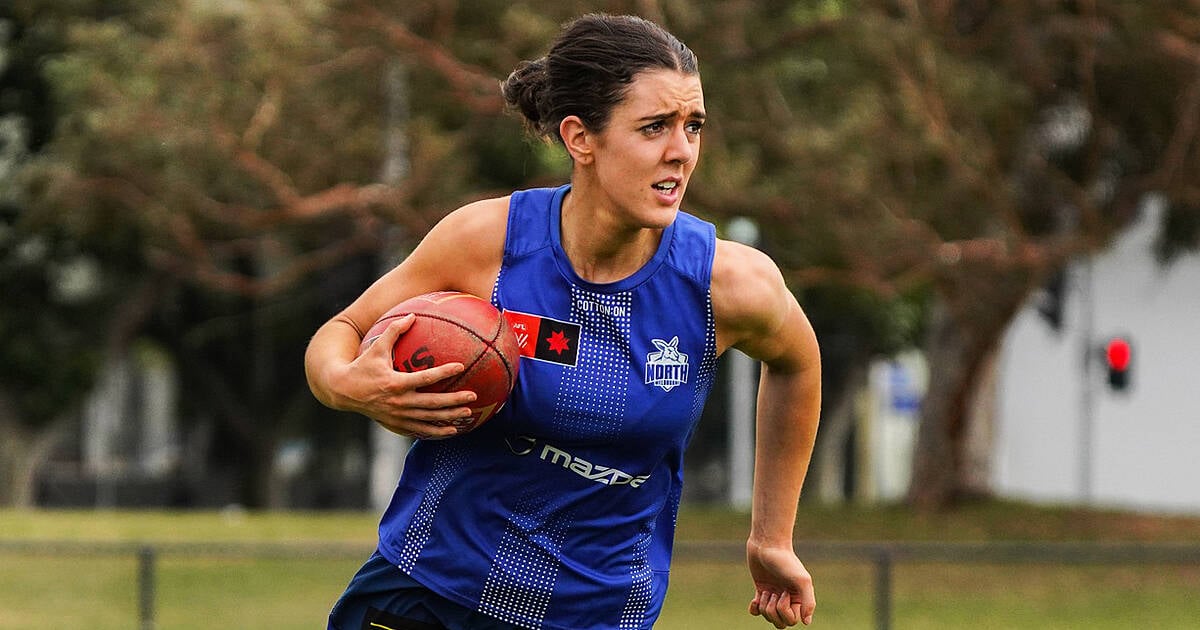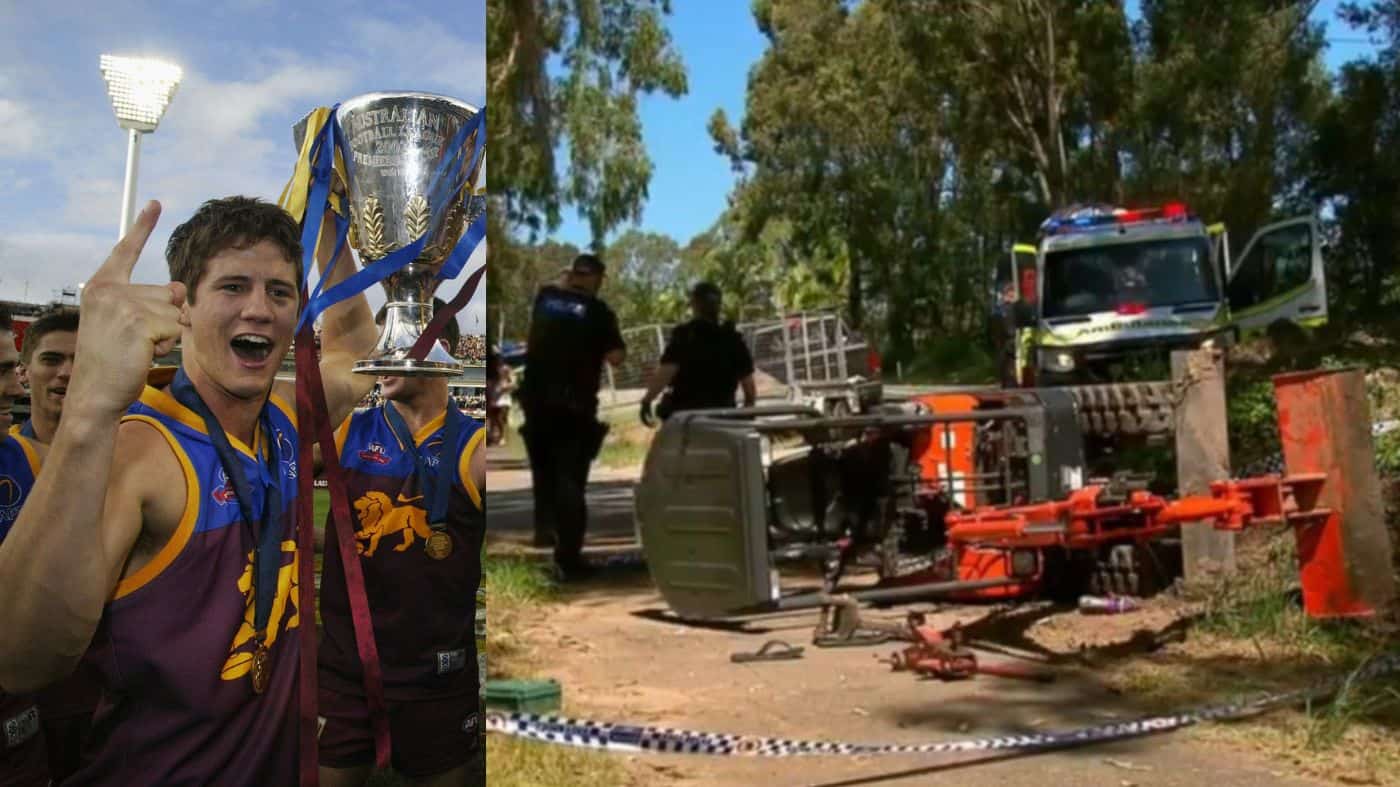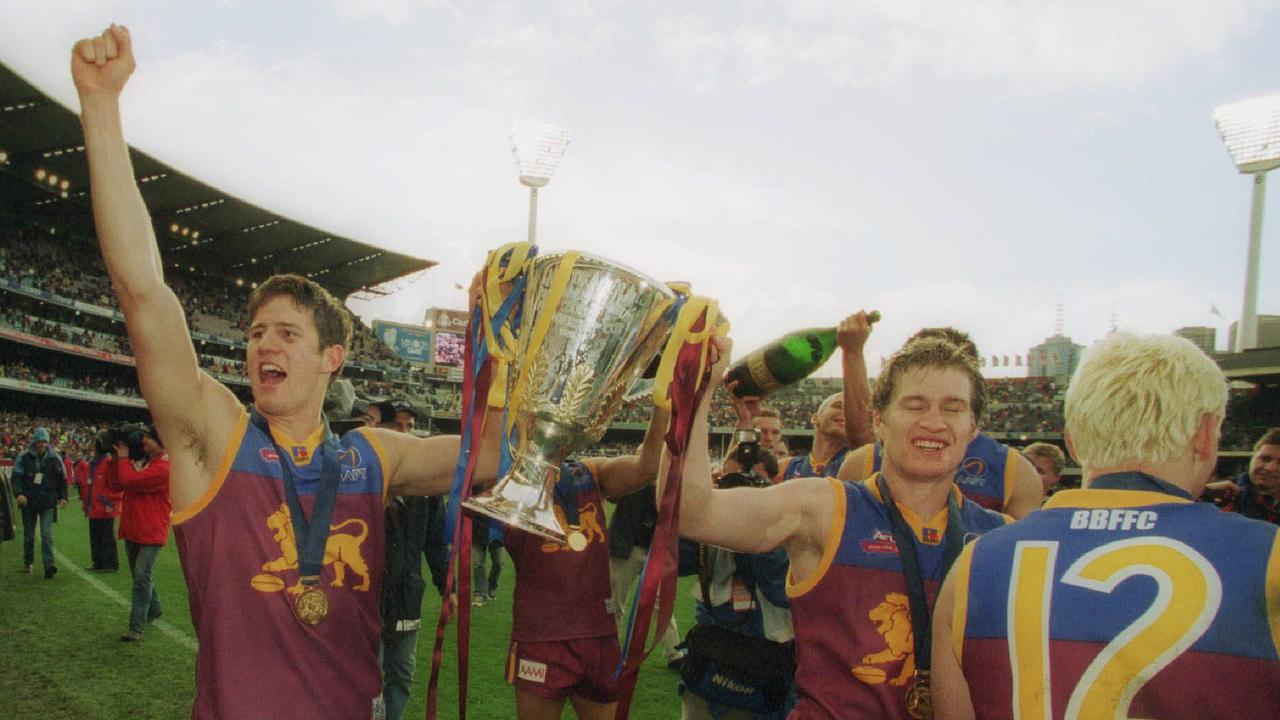‘It’s about expressing who I am’: Inside the world of football kit collecting

- by Admin
- October 25, 2024
Bradley Staer’s collection of 150 football jerseys tells the story of his life and his journey in the sport.
A huge Manchester United fan, he has every one of their home jerseys since 1986.
“A lot of people of my age will remember watching them in the ’90s and how successful they were,” he says.
Brad Staer is part of a booming community of Australian football kit collectors. (ABC Sunshine Coast: Amy Sheehan)
“I think memories are powerful, especially with football.”
Some of his favourite jerseys are from the now-defunct A-league franchise North Queensland Fury, Spain legend Andrés Iniesta’s Vissel Kobe shirt picked up during a trip to Japan, and Finland’s home and away jerseys from 2015.
“They probably have no value to anyone else except for me and some Finnish collectors, but I wouldn’t trade them for anything.”
Brad had a hard time sourcing these two Finland national team shirts from Australia. (ABC Sunshine Coast: Amy Sheehan)
They seem out-of-place, but the shirts remind Bradley of his proposal to his wife Tegan in a glass igloo while on holiday in the icy country that year.
“We have a lot of very fond memories of that trip.
“A jersey is worth what someone’s willing to pay for it. It’ll mean different things to different people.”
Brad often buys football shirts from the countries he visits with his wife to keep as life-long mementos. (Supplied: Brad Staer)
Kit collecting goes gangbusters
It’s generally agreed that the COVID pandemic helped spark a fascination for shirt collecting and trading among football fans.
“People were just looking for something extra to do,” says Tim Morley, owner-operator of the Football House.
“It just really boomed. And that’s not just in Australia, that’s worldwide as well.”
Tim Morley’s passion for vintage football shirts has evolved from a hobby to a full-time job over the past 15 years. (ABC News: Richard Sydenham)
He sources and resells authentic second-hand shirts.
“Some items that I may not have been able to sell for $50-70 back in the day- They’re now collectible things that people are willing to pay $250 plus for.”
Football fans packed out Tim Morley’s second hand pop-up in Melbourne, with lines out the door. (ABC News: Richard Sydenham)
Hundreds of people have attended Morley’s pop-up stores around the country, looking to get their hands on worn-in football treasures.
“It’s shirts they might have had as a kid that got wrecked or thrown away and they want to get that back again.”
“They’re becoming a little bit more harder to get as time goes on,” he says.
“But if you can find a gem from the ’80s or ’90s and it’s in good condition, people are usually willing to pay a good amount for that.”
Older, thrifted shirts can have more memories attached to them than brand new shirts. (ABC News: Richard Sydenham)
Retro designs make a comeback
Mariame Choucair from Sydney uses her Instagram to document her adventures as a Sky Blues fan, and to show how she styles her football jerseys.
“I think football shirt collecting and incorporating it into your everyday wear is becoming a trend.”
“For me, it’s about expressing who I am as a person.”
Mariame Choucair has built a social media following with her football photos. (Instagram @cahillexpress)
She has a collection of “about 150 to 160” jerseys, mostly Sydney FC, along with Socceroos, Matildas, Everton and Germany shirts.
“I love just showing people something unique and something original.”
“One of my favourite shirts in my collection is my 1990 West Germany World Cup home shirt, and it’s in a long sleeve. And it’s really, really hard to come by.”
Mariame gets questions about her rare Germany shirt every time she wears it. (ABC Sport: Bindi Bryce)
The global football sportswear market was estimated to be worth $129 billion (AUD) in 2023, according to IMARC, with the global consultancy group predicting it will be $200 billion by 2032.
Morley says authentic retro jerseys will always stand out amongst the mass-produced modern shirts.
“I think the vintage jerseys, they were previously made with a better quality, in my personal opinion.”
“All the European giants are the most popular. And of course, people love the Socceroos as well.
“Anything that’s vintage Socceroos or from the Golden Socceroos era, 2006-ish, people love that sort of stuff.”
Socceroos star Jackson Irvine has an impressive collection of vintage football shirts. (Instagram @jacksonirvine_)
The business of football shirts
The second hand market has economics behind it, with shirts of certain players or teams going up in value depending on what’s happening in the world of football.
“It’s a good investment. They can park their money, basically,” says Morley.
“They can sell it down the track 5 years later, 10 years later. And there won’t be many occasions where they’re going to be at a loss.”
It’s believed the cost-of-living crisis is also driving fans to seek out more affordable second-hand shirts. (ABC News: Richard Sydenham)
The growing interest in football jerseys has allowed many traders like Bradley to make their hobby into a side-hustle, using their well-honed sleuthing skills to find undervalued jerseys.
“It’s just a good way to sort of fund the collection without too much coming out of my pocket,” he says.
“I called myself Kit Hunter. It’s just knowing where to where to look basically.”
Vintage markets, eBay and Facebook are the key tools for kit collectors. (ABC News: Richard Sydenham)
A common tactic is to buy jerseys of an up-and-coming talent, which could soar in value if they become a superstar.
Adelaide United product Nestory Irankunda is one such player whose jersey could be in high demand in the coming years.
“I picked up one as a potential investment of sorts,” said Bradley.
“But I just think it’s a wonderful memory of his time in the A-league as well. He scored some incredible goals, he’s an amazing player.”
18-year-old Nestory Irankunda is one of the most exciting young talents to come out of the A-league, and is now playing with German giants Bayern Munich. (ABC News: Brant Cumming)
“Football kits are for everybody”
Mariame has been questioned about her involvement in the jersey collecting space, which is mostly occupied by men.
“I had people ask me, or males ask me, “Oh, you’re into football shirts. Like, why? How come?”
“They assumed that I had no idea about the shirts that I was collecting or the teams that I support.
“But that’s definitely come a long way.”
Mariame comes from a footballing family and grew up watching the game with her dad and older sister. (Instagram @mariamechoucair)
It’s now much more common for big sportswear brands to launch versions of football shirts in women’s sizing and shapes.
Morley says he’s seeing more interest in jerseys from female fans, especially after the success of the Matildas at the Women’s World Cup in Australia last year.
“The rise of the Matildas has been crazy. They get so many people to their games now.”
“Women used to have to just be able to buy the men’s kits. Now the women can buy kits that fit them.”
Nike experienced record-breaking demand during the World Cup for the now-iconic Matildas home jersey.
Sport shops ran out of Matildas shirts during the World Cup in Australia last year. (AAP: Darren England)
Mackenzie Arnold’s purple goalkeeper shirt sold out instantly earlier this year when it was finally made available for fans to purchase.
“Football kits are for everybody to wear. It doesn’t matter your background,” says Mariame.
“It doesn’t matter if you’re female or male or whatever gender it is that you are.
“Because of what the Tillies did … you’re seeing a lot more, men and women, young girls and young boys wearing and rocking their Matilda’s kits.”
Womens football shirts are more likely these days to have distinctive designs that are better fitted for their body types. (Getty Images: Robbie Jay Barratt/Boris Streubel/Silvestre Szpylma)
Home-grown passion
Football shirts that are unique or vintage are an instant conversation starter among fans and players.
“You see people with older sort of shirts or just something that maybe you hadn’t seen before,” says Bradley.
“It’s just another great way to connect with some of your mates as well and talk about that shirt, that jersey.”
Bradley with a Barcelona shirt, and one of the famous jerseys from the Socceroos epic World Cup Qualifying win over Uruguay in 2005. (ABC Sunshine Coast: Amy Sheehan)
Jerseys from the well-loved sides of Europe will always be in demand, but it’s hoped kit collecting will lead to more appreciation for Socceroos, Matildas and A-league jerseys.
“I generally do buy Sydney FC home, away and third kit pretty much every season,” says Mariame.
“I am someone who loves the game. Particularly the Australian game… I’m all about wearing it day-to-day and having that conversation with people.”
Aussie legend and former Everton star Tim Cahill is one of Mariame’s favourite players. (ABC Sport: Bindi Bryce)
The Latest News
-
December 23, 2024TaylorMade drops Hall-of-Fame Christmas posters starring Tiger Woods, Rory McIlroy and Nelly Korda – Australian Golf Digest
-
December 23, 2024Here’s why Golf Twitter lost its damn mind over Team Langer’s PNC victory – Australian Golf Digest
-
December 23, 2024Social Media Ban in Australia: What Online Casinos Can Learn on Responsible Gambling Practices? – Insights from CasinoAus
-
December 23, 2024From smaller homes to screen time, backyard cricket is facing challenges in modern Australia
-
December 23, 2024This quiet Canadian will make you love YouTube golf again – Australian Golf Digest




